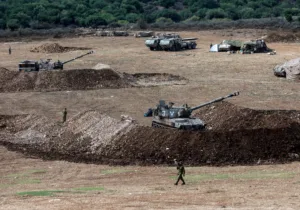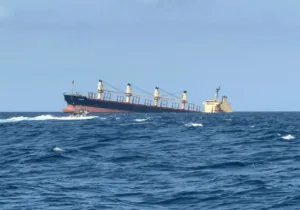There’s a story in scripture about two builders. The wise, farsighted builder built his house on the solid foundation of rock. The foolish, shortsighted builder didn’t take the time, spend the money, or devote the resources to digging down to bedrock. Instead, he took the easy way and built his house on sand. When the storms came, only one house was left standing—the house built on rock. To be sure, Jesus was using a common, everyday example to reveal a deeper spiritual truth. But the given of the parable—that in this broken world, disaster tends to affect us all—is a timeless reminder of the importance of preparedness. When disaster strikes, only those who build on rock—who devote the resources to being prepared—survive the storm. As missile threats and nuclear threats gather around us, we are ignoring this bedrock truth at our peril.
Some observers dismiss the threat posed by North Korea and Iran, noting that these third-rate regional powers could do little harm to American territory or the American people. But such a view ignores the devastating impact a high-altitude electromagnetic pulse (EMP) event could have on the United States. An EMP attack (caused by a hostile power detonating one or more nuclear devices high above U.S. territory) or an EMP event (caused by solar flares triggering a “geomagnetic storm”) would render inoperable virtually all of our electrical and computer devices, throwing our technology-dependent economy and society back to the 1800s.
This is not a far-off possibility, but rather a real-world reality. In fact, American citizens and cities have already been hit by EMP. It happened in 1962 in Hawaii, when the U.S. military test-detonated a nuclear warhead 248 miles above Johnston Island. Immediately after the blast, something unexpected happened some 900 miles away: Telephone lines, power lines, and electrical systems shorted out in Hawaii.
This explains why political, civil defense, and military officials in Hawaii are deeply concerned about the missile and nuclear threat from North Korea. Yet as Peter Pry, who served on the Congressional EMP Commission, noted in 2015, “The White House and the Congress have done nothing to protect the electric grid from a long-term blackout.”
As Pry points out, “The military doctrines of Russia, China, North Korea and Iran describe a revolutionary new kind of warfare that would use cyberattacks and physical sabotage, combined and coordinated with EMP attack, to black out the national electric grid and crash the other critical infrastructures.”
To be sure, Russia and China are responsive to deterrence and the threat of overwhelming retaliation. But a paranoid Pyongyang and a terrorist Tehran may not be.
“We have data indicating that the Iranians have launched their versions of Scuds off of the Caspian Sea—not from land, but from the sea—and launched them over land,” William Graham explained in a recent Forbes interview. Graham chaired the Congressional EMP Commission. “We’ve also seen them launch missiles that have gone up and apparently exploded near their highest altitude—when you put those two ideas together—that is an EMP attack.”
Indeed, the Iranian military openly contemplates such an attack against the U.S. Pry adds that “North Korea has actually practiced this against the United States.”
Thus, Graham and other EMP experts warned in a 2013 letter to President Obama, “A high altitude nuclear EMP attack from North Korea is an imminent threat to the United States.”
The good news is this: The United States can—if it summons the will—prepare for and guard against the EMP threat.
Toward that end, Graham and his colleagues urged Obama to pursue “emergency deployment of cost-effective missile defense systems” to provide a first line of defense against North Korea’s and Iran’s missile capabilities; called for “protection of electric-grid control rooms at regional balancing authorities” and “critical Extra High Voltage transformers” across the country; called on Washington to ensure that “all high-priority critical infrastructures when upgraded or replaced…be subject to nuclear EMP-protection standard.”
In a similar vein, the EMP Coalition—with former House Speaker Newt Gingrich leading the way—urges government and industry to work together to harden the electrical grid with the equivalent of industrial-scale surge protectors at key points in the grid. So-called “Faraday Cages”—boxes that absorb electrical current—could be installed at key junctures. In addition, as The Atlantic magazine reports, government and industry need to have replacement parts, such as industrial-scale transformers, at the ready.
Legislation in two different congresses and a blue-ribbon commission that worked from 2001 to 2008 tried to push these sorts of measures. But nothing has become law to date.
George Washington urged Congress to choose “preparation and vigor” over complacency, and to summon the will “to do what our abilities and the circumstance of our finance may well justify.” Likewise, Dwight Eisenhower cited continuity and national security in rallying support for the interstate highway system: “In case of an atomic attack on our key cities, the road net must permit quick evacuation of target areas, mobilization of defense forces and maintenance of every essential economic function.”
These leaders understood the importance of preparedness—because once the storms come, it’s too late.
—
Alan Dowd is a contributing editor to Providence and a senior fellow with the Sagamore Institute Center for America’s Purpose.
Photo Credit: A mid-range surface-to-surface Emad (Assertiveness) missile being launched at an undisclosed location in Iran. Picture made available by Iran’s defense ministry’s official website on October 11, 2015.







 Live in the DC area? Sign-up for Providence's in-person events list!
Live in the DC area? Sign-up for Providence's in-person events list!